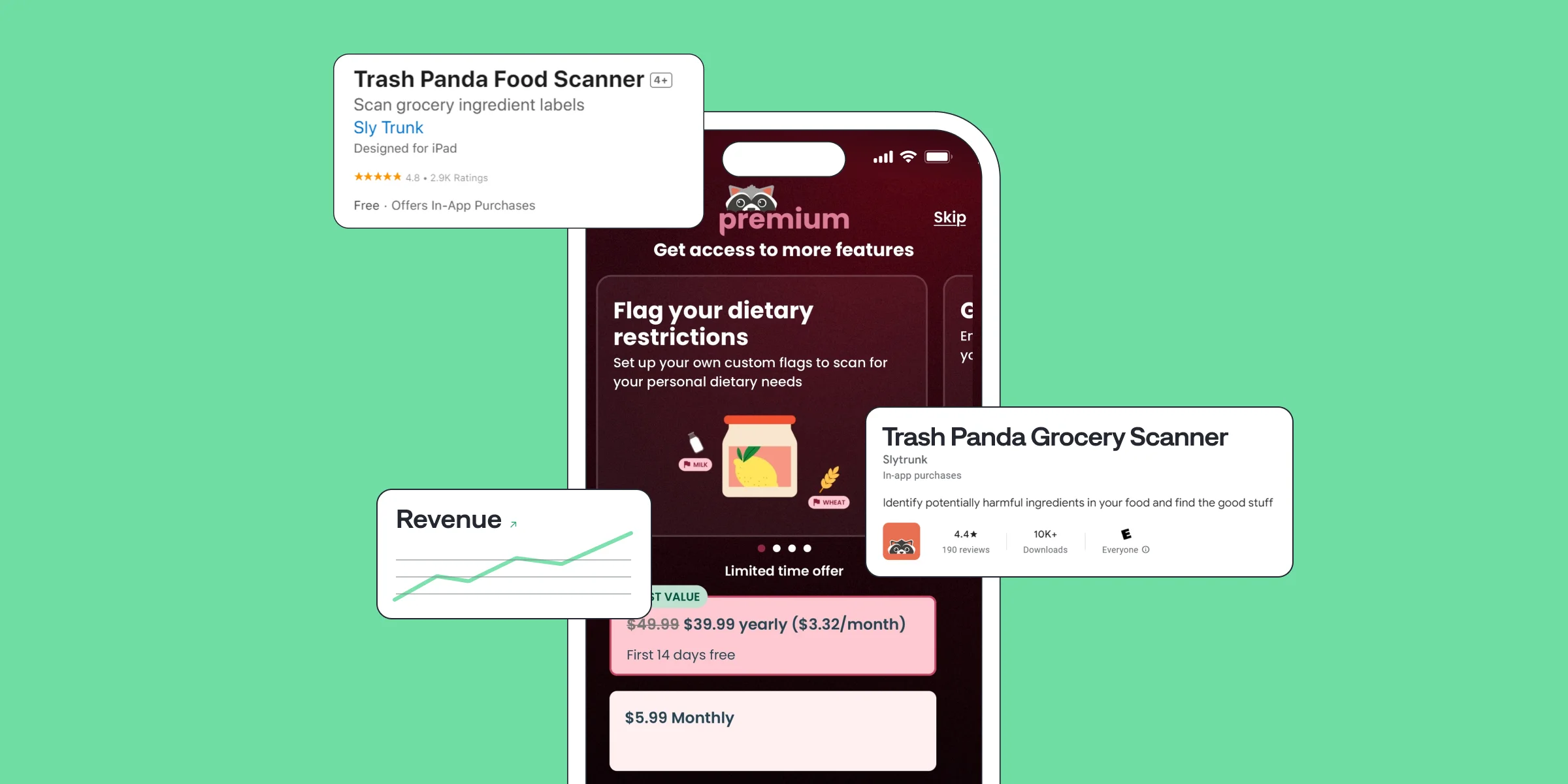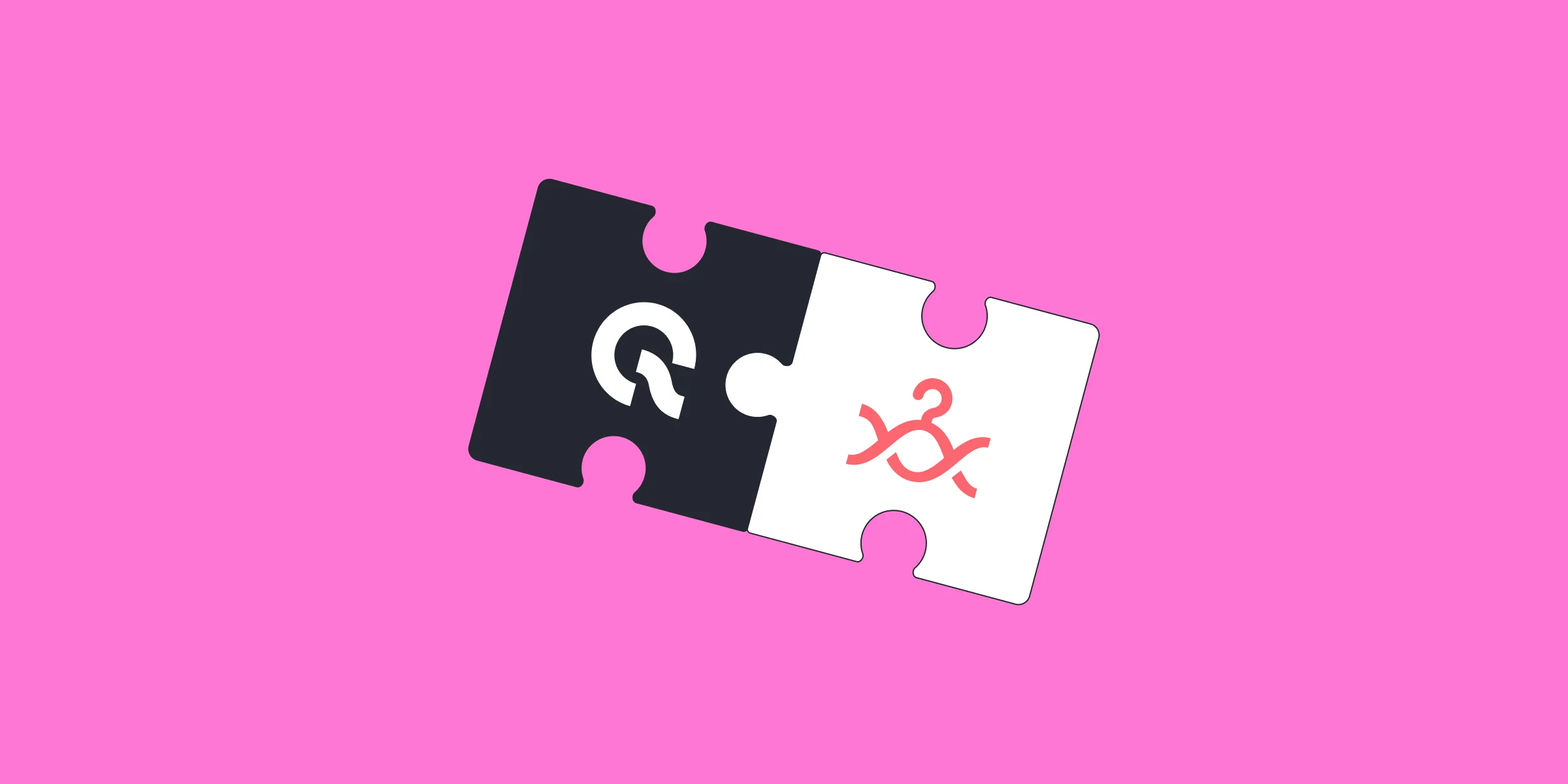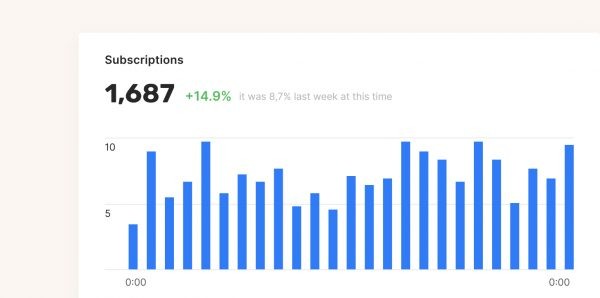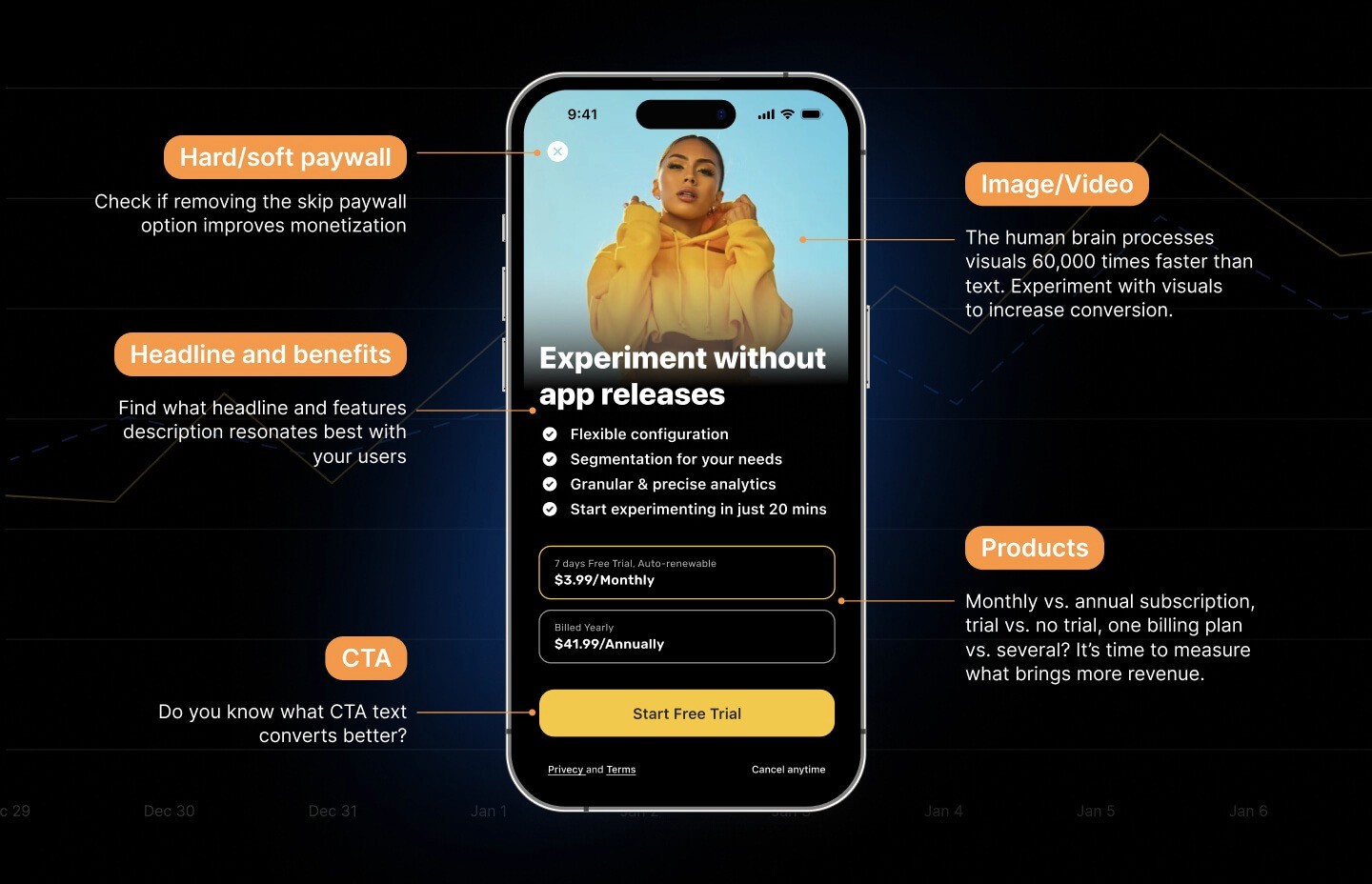Summary
IDFA in iOS 14. The market leaders about the new reality
What is IDFA?
IDFA or the ID (identifier) For Advertisers is a unique random number adopted by Apple to allow it to track users by advertising networks. The IDFA reveals the user’s personal information but in return helps advertising tools to target ads to the right user, measure marketing results, and attribute installs to marketing campaigns. The IDFA can be used to analyze user behavior with the help of in-app events in product analytics like Amplitude, Mixpanel, etc.
Why is it important?
Paid acquisition channels are fundamental for mobile app publishers from game development to social networks, e-commerce, or lifestyle apps. The market needs to have stable marketing channels to acquire new users on a daily basis. That’s why Apple launched Apple Search Ads, Facebook stocks are growing year by year, and even TikTok launched their advertisement self-service platform this year.
Eight years ago, since 2012, when iOS 6 was released, we used to live in a world where we could target users and optimize marketing campaigns using mostly IDFA to match clicks, installs, in-app, and user events. Apple App Store’s growth is enormous – the number of apps skyrocketed from 450 000 in 2012 to 4.67 million in 2019. The 5000 apps that were in the market in 2008 are worth nothing nowadays.


It looks like the mobile app ecosystem is already settled down, and any changes may significantly destroy it. Qonversion is integrated with dozens of 3rd party tools that use IDFA, so we are closely monitoring the situation and keeping our finger on the pulse.
SKAdNetwork and AppTrackingTransparency – what is that?
In June 2020, Apple introduced two new frameworks for attribution and advertisement measurements:
AppTrackingTransparency is a framework by calling the requestTrackingAuthorization(completionHandler:) to manage access to the IDFA. This method shows a dialog with a request to allow/deny tracking once the app is installed once per app install. The only thing developers can customize is NSUserTrackingUsageDescription to replace the text requesting permission.
SKAdNetwork is a framework introduced in 2018 and updated to v.2 which reduces access to the IDFA. According to Apple, “The ad network API helps advertisers measure the success of ad campaigns while maintaining user privacy.” Based on the framework, attribution and analytics platforms build their solutions. The SKAdNetwork attribution window, according to App Store Connect Engineer feedback “From the time of app install to first launch (and registering the install), can take 60-days.”
SKAdNetwork provides updateConversionValue(_:) is a 6-bits of downstream metrics with the first 24-hour timer. More details here.


AppsFlyer Attribution without IDFA. SKAdNetwork Solution for iOS 14
AppsFlyer has presented its solution and described the implementation of SKAdNetwork and AppsFlyer attribution. The solution is based on the allowed SKAdNetwork methods and signal. It means that user-level details on the campaign level are available only if the user has provided AppTrackingTransparency (ATT) permission.
Clicks and impressions on the user-level will not be available to anyone.


Adjust iOS 14 – thoughts about the future
Spoiler: Adjust does not believe that everything will be demolished and that the App Store ecosystem may go down. At the same time, Adjust has announced that they are working on a solution and will release it in September 2020. I guess if you are an Adjust customer, don’t worry about that. Just relax and wait for the upcoming solution.
You may also read some articles written by CTO and Co-founder of Adjust:
SKAdNetwork and Branch
As the leading competitor, Branch is also working on its solution. The blog post was published on August 14 and contained some solution details.
SDK update to support
registerAppForAdNetworkAttribution()andupdateConversionValue(0-63)for SKAdNetwork. Branch claims that the only thing their customers need to do is update the Branch SDK and enable SKAdNetwork. Sounds great!Verification of Apple Postbacks from Ad Networks and then aggregating this data to display on the new dashboards.
New dashboard to view SKAdNetwork attribution data.
Facebook Ads without IDFA
There are many scandals on data privacy and how Facebook handles it, but what we know is that Facebook’s targeting algorithms are great for acquiring high-value users. Since Apple’s iOS 14 changes announcement, there’s not enough information from Facebook nor any thoughts on how it impacts their business. However, a couple of days after WWDC Facebook published a blog post, The Value of Personalized Ads to a Thriving App Ecosystem, `where it shared internal test results – advertisers lose 50% revenue without personalized targeting and optimization.
According to CNBC Facebook CFO David Wehner said that the upcoming changes to Apple’s iOS 14 could hurt the social network’s ability to target ads to users.
Well, hopefully, Facebook and Apple will be able to find a solution. If not, publishers will notice the changes immediately after the iOS 14 will be released.
Amplitude answers on the iOS 14 IDFA Changes
Amplitude claims there will be no impact. Here you can see the FAQ from Amplitude with the most common questions.
More useful things
Handling refunds, Server-to-Server notifications, SKAdNetwork in iOS 14 by Qonversion
SKAdnetwork example. Sample apps on how to implement SKAdNetwork by Singular
SKAdnetwork tutorial Apple Developer
User Privacy and Data Use Apple Developer
IDFA in iOS 14. The market leaders about the new reality
What is IDFA?
IDFA or the ID (identifier) For Advertisers is a unique random number adopted by Apple to allow it to track users by advertising networks. The IDFA reveals the user’s personal information but in return helps advertising tools to target ads to the right user, measure marketing results, and attribute installs to marketing campaigns. The IDFA can be used to analyze user behavior with the help of in-app events in product analytics like Amplitude, Mixpanel, etc.
Why is it important?
Paid acquisition channels are fundamental for mobile app publishers from game development to social networks, e-commerce, or lifestyle apps. The market needs to have stable marketing channels to acquire new users on a daily basis. That’s why Apple launched Apple Search Ads, Facebook stocks are growing year by year, and even TikTok launched their advertisement self-service platform this year.
Eight years ago, since 2012, when iOS 6 was released, we used to live in a world where we could target users and optimize marketing campaigns using mostly IDFA to match clicks, installs, in-app, and user events. Apple App Store’s growth is enormous – the number of apps skyrocketed from 450 000 in 2012 to 4.67 million in 2019. The 5000 apps that were in the market in 2008 are worth nothing nowadays.


It looks like the mobile app ecosystem is already settled down, and any changes may significantly destroy it. Qonversion is integrated with dozens of 3rd party tools that use IDFA, so we are closely monitoring the situation and keeping our finger on the pulse.
SKAdNetwork and AppTrackingTransparency – what is that?
In June 2020, Apple introduced two new frameworks for attribution and advertisement measurements:
AppTrackingTransparency is a framework by calling the requestTrackingAuthorization(completionHandler:) to manage access to the IDFA. This method shows a dialog with a request to allow/deny tracking once the app is installed once per app install. The only thing developers can customize is NSUserTrackingUsageDescription to replace the text requesting permission.
SKAdNetwork is a framework introduced in 2018 and updated to v.2 which reduces access to the IDFA. According to Apple, “The ad network API helps advertisers measure the success of ad campaigns while maintaining user privacy.” Based on the framework, attribution and analytics platforms build their solutions. The SKAdNetwork attribution window, according to App Store Connect Engineer feedback “From the time of app install to first launch (and registering the install), can take 60-days.”
SKAdNetwork provides updateConversionValue(_:) is a 6-bits of downstream metrics with the first 24-hour timer. More details here.


AppsFlyer Attribution without IDFA. SKAdNetwork Solution for iOS 14
AppsFlyer has presented its solution and described the implementation of SKAdNetwork and AppsFlyer attribution. The solution is based on the allowed SKAdNetwork methods and signal. It means that user-level details on the campaign level are available only if the user has provided AppTrackingTransparency (ATT) permission.
Clicks and impressions on the user-level will not be available to anyone.


Adjust iOS 14 – thoughts about the future
Spoiler: Adjust does not believe that everything will be demolished and that the App Store ecosystem may go down. At the same time, Adjust has announced that they are working on a solution and will release it in September 2020. I guess if you are an Adjust customer, don’t worry about that. Just relax and wait for the upcoming solution.
You may also read some articles written by CTO and Co-founder of Adjust:
SKAdNetwork and Branch
As the leading competitor, Branch is also working on its solution. The blog post was published on August 14 and contained some solution details.
SDK update to support
registerAppForAdNetworkAttribution()andupdateConversionValue(0-63)for SKAdNetwork. Branch claims that the only thing their customers need to do is update the Branch SDK and enable SKAdNetwork. Sounds great!Verification of Apple Postbacks from Ad Networks and then aggregating this data to display on the new dashboards.
New dashboard to view SKAdNetwork attribution data.
Facebook Ads without IDFA
There are many scandals on data privacy and how Facebook handles it, but what we know is that Facebook’s targeting algorithms are great for acquiring high-value users. Since Apple’s iOS 14 changes announcement, there’s not enough information from Facebook nor any thoughts on how it impacts their business. However, a couple of days after WWDC Facebook published a blog post, The Value of Personalized Ads to a Thriving App Ecosystem, `where it shared internal test results – advertisers lose 50% revenue without personalized targeting and optimization.
According to CNBC Facebook CFO David Wehner said that the upcoming changes to Apple’s iOS 14 could hurt the social network’s ability to target ads to users.
Well, hopefully, Facebook and Apple will be able to find a solution. If not, publishers will notice the changes immediately after the iOS 14 will be released.
Amplitude answers on the iOS 14 IDFA Changes
Amplitude claims there will be no impact. Here you can see the FAQ from Amplitude with the most common questions.
More useful things
Handling refunds, Server-to-Server notifications, SKAdNetwork in iOS 14 by Qonversion
SKAdnetwork example. Sample apps on how to implement SKAdNetwork by Singular
SKAdnetwork tutorial Apple Developer
User Privacy and Data Use Apple Developer
IDFA in iOS 14. The market leaders about the new reality
What is IDFA?
IDFA or the ID (identifier) For Advertisers is a unique random number adopted by Apple to allow it to track users by advertising networks. The IDFA reveals the user’s personal information but in return helps advertising tools to target ads to the right user, measure marketing results, and attribute installs to marketing campaigns. The IDFA can be used to analyze user behavior with the help of in-app events in product analytics like Amplitude, Mixpanel, etc.
Why is it important?
Paid acquisition channels are fundamental for mobile app publishers from game development to social networks, e-commerce, or lifestyle apps. The market needs to have stable marketing channels to acquire new users on a daily basis. That’s why Apple launched Apple Search Ads, Facebook stocks are growing year by year, and even TikTok launched their advertisement self-service platform this year.
Eight years ago, since 2012, when iOS 6 was released, we used to live in a world where we could target users and optimize marketing campaigns using mostly IDFA to match clicks, installs, in-app, and user events. Apple App Store’s growth is enormous – the number of apps skyrocketed from 450 000 in 2012 to 4.67 million in 2019. The 5000 apps that were in the market in 2008 are worth nothing nowadays.


It looks like the mobile app ecosystem is already settled down, and any changes may significantly destroy it. Qonversion is integrated with dozens of 3rd party tools that use IDFA, so we are closely monitoring the situation and keeping our finger on the pulse.
SKAdNetwork and AppTrackingTransparency – what is that?
In June 2020, Apple introduced two new frameworks for attribution and advertisement measurements:
AppTrackingTransparency is a framework by calling the requestTrackingAuthorization(completionHandler:) to manage access to the IDFA. This method shows a dialog with a request to allow/deny tracking once the app is installed once per app install. The only thing developers can customize is NSUserTrackingUsageDescription to replace the text requesting permission.
SKAdNetwork is a framework introduced in 2018 and updated to v.2 which reduces access to the IDFA. According to Apple, “The ad network API helps advertisers measure the success of ad campaigns while maintaining user privacy.” Based on the framework, attribution and analytics platforms build their solutions. The SKAdNetwork attribution window, according to App Store Connect Engineer feedback “From the time of app install to first launch (and registering the install), can take 60-days.”
SKAdNetwork provides updateConversionValue(_:) is a 6-bits of downstream metrics with the first 24-hour timer. More details here.


AppsFlyer Attribution without IDFA. SKAdNetwork Solution for iOS 14
AppsFlyer has presented its solution and described the implementation of SKAdNetwork and AppsFlyer attribution. The solution is based on the allowed SKAdNetwork methods and signal. It means that user-level details on the campaign level are available only if the user has provided AppTrackingTransparency (ATT) permission.
Clicks and impressions on the user-level will not be available to anyone.


Adjust iOS 14 – thoughts about the future
Spoiler: Adjust does not believe that everything will be demolished and that the App Store ecosystem may go down. At the same time, Adjust has announced that they are working on a solution and will release it in September 2020. I guess if you are an Adjust customer, don’t worry about that. Just relax and wait for the upcoming solution.
You may also read some articles written by CTO and Co-founder of Adjust:
SKAdNetwork and Branch
As the leading competitor, Branch is also working on its solution. The blog post was published on August 14 and contained some solution details.
SDK update to support
registerAppForAdNetworkAttribution()andupdateConversionValue(0-63)for SKAdNetwork. Branch claims that the only thing their customers need to do is update the Branch SDK and enable SKAdNetwork. Sounds great!Verification of Apple Postbacks from Ad Networks and then aggregating this data to display on the new dashboards.
New dashboard to view SKAdNetwork attribution data.
Facebook Ads without IDFA
There are many scandals on data privacy and how Facebook handles it, but what we know is that Facebook’s targeting algorithms are great for acquiring high-value users. Since Apple’s iOS 14 changes announcement, there’s not enough information from Facebook nor any thoughts on how it impacts their business. However, a couple of days after WWDC Facebook published a blog post, The Value of Personalized Ads to a Thriving App Ecosystem, `where it shared internal test results – advertisers lose 50% revenue without personalized targeting and optimization.
According to CNBC Facebook CFO David Wehner said that the upcoming changes to Apple’s iOS 14 could hurt the social network’s ability to target ads to users.
Well, hopefully, Facebook and Apple will be able to find a solution. If not, publishers will notice the changes immediately after the iOS 14 will be released.
Amplitude answers on the iOS 14 IDFA Changes
Amplitude claims there will be no impact. Here you can see the FAQ from Amplitude with the most common questions.
More useful things
Handling refunds, Server-to-Server notifications, SKAdNetwork in iOS 14 by Qonversion
SKAdnetwork example. Sample apps on how to implement SKAdNetwork by Singular
SKAdnetwork tutorial Apple Developer
User Privacy and Data Use Apple Developer
IDFA in iOS 14. The market leaders about the new reality
What is IDFA?
IDFA or the ID (identifier) For Advertisers is a unique random number adopted by Apple to allow it to track users by advertising networks. The IDFA reveals the user’s personal information but in return helps advertising tools to target ads to the right user, measure marketing results, and attribute installs to marketing campaigns. The IDFA can be used to analyze user behavior with the help of in-app events in product analytics like Amplitude, Mixpanel, etc.
Why is it important?
Paid acquisition channels are fundamental for mobile app publishers from game development to social networks, e-commerce, or lifestyle apps. The market needs to have stable marketing channels to acquire new users on a daily basis. That’s why Apple launched Apple Search Ads, Facebook stocks are growing year by year, and even TikTok launched their advertisement self-service platform this year.
Eight years ago, since 2012, when iOS 6 was released, we used to live in a world where we could target users and optimize marketing campaigns using mostly IDFA to match clicks, installs, in-app, and user events. Apple App Store’s growth is enormous – the number of apps skyrocketed from 450 000 in 2012 to 4.67 million in 2019. The 5000 apps that were in the market in 2008 are worth nothing nowadays.


It looks like the mobile app ecosystem is already settled down, and any changes may significantly destroy it. Qonversion is integrated with dozens of 3rd party tools that use IDFA, so we are closely monitoring the situation and keeping our finger on the pulse.
SKAdNetwork and AppTrackingTransparency – what is that?
In June 2020, Apple introduced two new frameworks for attribution and advertisement measurements:
AppTrackingTransparency is a framework by calling the requestTrackingAuthorization(completionHandler:) to manage access to the IDFA. This method shows a dialog with a request to allow/deny tracking once the app is installed once per app install. The only thing developers can customize is NSUserTrackingUsageDescription to replace the text requesting permission.
SKAdNetwork is a framework introduced in 2018 and updated to v.2 which reduces access to the IDFA. According to Apple, “The ad network API helps advertisers measure the success of ad campaigns while maintaining user privacy.” Based on the framework, attribution and analytics platforms build their solutions. The SKAdNetwork attribution window, according to App Store Connect Engineer feedback “From the time of app install to first launch (and registering the install), can take 60-days.”
SKAdNetwork provides updateConversionValue(_:) is a 6-bits of downstream metrics with the first 24-hour timer. More details here.


AppsFlyer Attribution without IDFA. SKAdNetwork Solution for iOS 14
AppsFlyer has presented its solution and described the implementation of SKAdNetwork and AppsFlyer attribution. The solution is based on the allowed SKAdNetwork methods and signal. It means that user-level details on the campaign level are available only if the user has provided AppTrackingTransparency (ATT) permission.
Clicks and impressions on the user-level will not be available to anyone.


Adjust iOS 14 – thoughts about the future
Spoiler: Adjust does not believe that everything will be demolished and that the App Store ecosystem may go down. At the same time, Adjust has announced that they are working on a solution and will release it in September 2020. I guess if you are an Adjust customer, don’t worry about that. Just relax and wait for the upcoming solution.
You may also read some articles written by CTO and Co-founder of Adjust:
SKAdNetwork and Branch
As the leading competitor, Branch is also working on its solution. The blog post was published on August 14 and contained some solution details.
SDK update to support
registerAppForAdNetworkAttribution()andupdateConversionValue(0-63)for SKAdNetwork. Branch claims that the only thing their customers need to do is update the Branch SDK and enable SKAdNetwork. Sounds great!Verification of Apple Postbacks from Ad Networks and then aggregating this data to display on the new dashboards.
New dashboard to view SKAdNetwork attribution data.
Facebook Ads without IDFA
There are many scandals on data privacy and how Facebook handles it, but what we know is that Facebook’s targeting algorithms are great for acquiring high-value users. Since Apple’s iOS 14 changes announcement, there’s not enough information from Facebook nor any thoughts on how it impacts their business. However, a couple of days after WWDC Facebook published a blog post, The Value of Personalized Ads to a Thriving App Ecosystem, `where it shared internal test results – advertisers lose 50% revenue without personalized targeting and optimization.
According to CNBC Facebook CFO David Wehner said that the upcoming changes to Apple’s iOS 14 could hurt the social network’s ability to target ads to users.
Well, hopefully, Facebook and Apple will be able to find a solution. If not, publishers will notice the changes immediately after the iOS 14 will be released.
Amplitude answers on the iOS 14 IDFA Changes
Amplitude claims there will be no impact. Here you can see the FAQ from Amplitude with the most common questions.
More useful things
Handling refunds, Server-to-Server notifications, SKAdNetwork in iOS 14 by Qonversion
SKAdnetwork example. Sample apps on how to implement SKAdNetwork by Singular
SKAdnetwork tutorial Apple Developer
User Privacy and Data Use Apple Developer
Start Now for Free
Or book a demo with our team to learn more about Qonversion
Start Now for Free
Or book a demo with our team to learn more about Qonversion
Start Now for Free
Or book a demo with our team to learn more about Qonversion
Read more
Read more

Trash Panda Maximizes App Revenue after Setting the Best Subscription Price with A/B Tests
Jul 8, 2024
Jul 8, 2024

How StyleDNA Saved 20% Development Time and Unlocked New Features
Jun 19, 2024
Jun 19, 2024

WWDC24 Updates for App Developers | What's new in Storekit 2 and App Store Server API?
Jun 17, 2024
Jun 17, 2024

How A/B Testing with Qonversion Helped Iben Sandahl’s Parenting App Double Their Sales
Jun 13, 2024
Jun 13, 2024

Trash Panda Maximizes App Revenue after Setting the Best Subscription Price with A/B Tests
Jul 8, 2024
Jul 8, 2024

How StyleDNA Saved 20% Development Time and Unlocked New Features
Jun 19, 2024
Jun 19, 2024

WWDC24 Updates for App Developers | What's new in Storekit 2 and App Store Server API?
Jun 17, 2024
Jun 17, 2024









